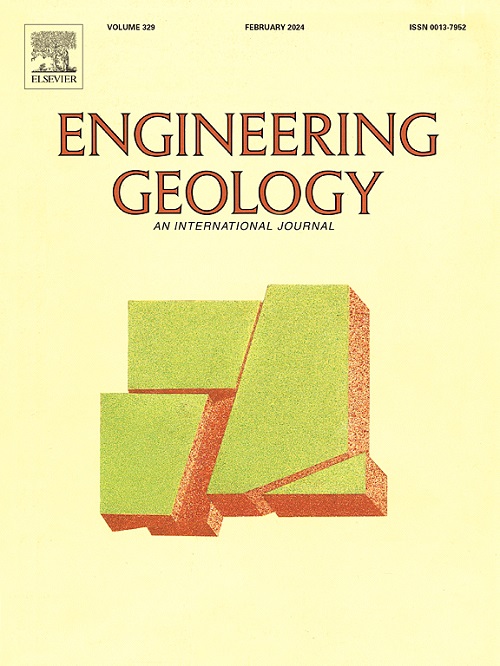基于模糊数学的砾石土液化危害评价GLPI框架
IF 8.4
1区 工程技术
Q1 ENGINEERING, GEOLOGICAL
引用次数: 0
摘要
液化潜力指数(LPI)是评价砂质土壤液化危险性的常用方法,但并不适用于砾质土壤。此外,液化预测方法的选择和深度加权函数的形式也会对LPI的计算结果产生较大影响。同时,将LPI值划分为危害等级的四分位数阈值法存在边界不确定性,也会影响灾害评估的准确性。因此,本研究探讨了不同液化预测方法(简化程序法及其改进、贝叶斯网络模型)和不同深度加权函数(线性、对数、指数、双曲和幂函数)对LPI结果和灾害预测精度的影响。此外,提出了一种新的砂砾土液化潜力评价指标(GLPI),并采用模糊数学方法处理边界不确定性。结果表明,该方法的预测精度比LPI模型提高了55%。在GLPI计算框架中,使用贝叶斯网络方法代替简化的液化预测程序是提高危害评估准确性的最有效方法,提高了33%;深度加权函数的影响相对较小,双曲函数比线性函数提高了8%。在基于GLPI值的危害评价中,模糊数学比四分位数阈值法提高了9%。最后,在新的历史液化地点验证了GLPI方法的有效性。本文章由计算机程序翻译,如有差异,请以英文原文为准。
A GLPI framework for gravelly soil liquefaction hazard assessment based on fuzzy mathematics
The Liquefaction Potential Index (LPI) is commonly used to evaluate liquefaction hazards in sandy soils, but is not applicable to gravelly soils. In addition, the choice of liquefaction prediction methods and the form of depth weighting functions may greatly affect the result of the LPI calculation. Meanwhile, the quartile thresholding method, for classifying the LPI values into hazard levels, suffers from boundary uncertainty, which can also affect the disaster assessment accuracy. Therefore, this study investigates the effects of different liquefaction prediction methods (simplified procedural method and its improvements, Bayesian network models) and different depth weighting functions (linear, logarithmic, exponential, hyperbolic, and power functions) on LPI results and disaster prediction accuracy. In addition, a new liquefaction potential index for gravelly soil (GLPI) evaluation is proposed, and the fuzzy mathematical method is used to handle the boundary uncertainty. The results show that the proposed GLPI hazard assessment method improves the prediction accuracy by 55 % over the LPI model. For the GLPI computational framework, the use of the Bayesian network method instead of the simplified procedure for liquefaction prediction was the most effective method for improving the accuracy of hazard assessment, with an improvement of 33 %; the depth weighting function has a relatively smaller effect, and the hyperbolic function has an improvement of 8 % compared with the linear function. In the hazard assessment based on GLPI values, fuzzy mathematics improved by 9 % over the quartile threshold method. Finally, the effectiveness of GLPI method was validated in new historical liquefied sites.
求助全文
通过发布文献求助,成功后即可免费获取论文全文。
去求助
来源期刊

Engineering Geology
地学-地球科学综合
CiteScore
13.70
自引率
12.20%
发文量
327
审稿时长
5.6 months
期刊介绍:
Engineering Geology, an international interdisciplinary journal, serves as a bridge between earth sciences and engineering, focusing on geological and geotechnical engineering. It welcomes studies with relevance to engineering, environmental concerns, and safety, catering to engineering geologists with backgrounds in geology or civil/mining engineering. Topics include applied geomorphology, structural geology, geophysics, geochemistry, environmental geology, hydrogeology, land use planning, natural hazards, remote sensing, soil and rock mechanics, and applied geotechnical engineering. The journal provides a platform for research at the intersection of geology and engineering disciplines.
 求助内容:
求助内容: 应助结果提醒方式:
应助结果提醒方式:


